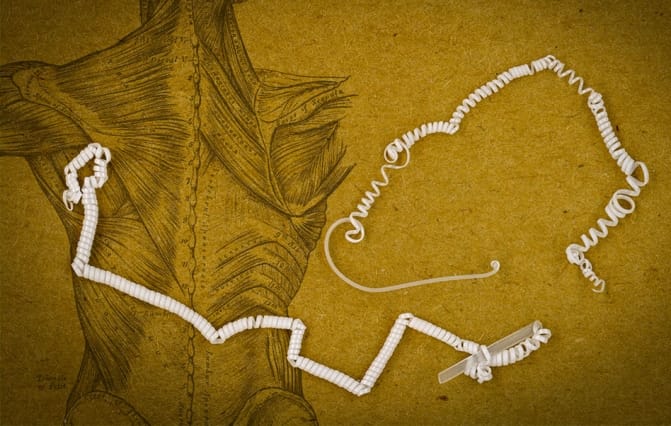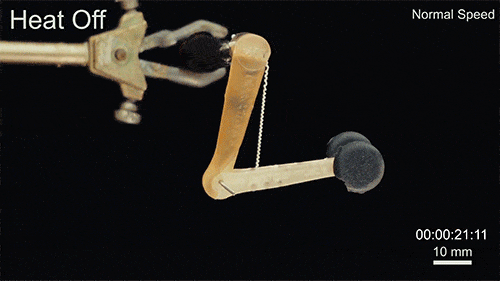
Cucumbers and some other plants employ mechanical means to maximise the amount of sunlight they receive. Tightly coiling tendrils seek out support and pull the plant stems upwards. This phenomenon – which goes by the charming name of tendril perversion – is the inspiration for a new form of artificial muscle fibre developed by engineers at MIT.
Other approaches to artificial muscle have included shape-memory alloys, servo motors, polymers which respond to external stimuli, and hydraulics. However, drawbacks have limited their application, such as high weight and bulk of equipment and slow response times. The MIT team, working under the direction of Prof Polina Anikeeva, claims that the new fibre-based system is both lightweight and fast to respond.
In a paper in Science, Anikeeva and colleagues explain how they used a fibre-drawing technique to combine two dissimilar polymers – a stretchy cyclic copolymer elastomer and a semi-crystalline thermoplastic polyethylene – into a single strand of fibre. The two materials have very different thermal expansion coefficients, and when warmed the material which tends to expand faster is held back by the other material. In the same way that the bimetallic strip in the thermostat bends away from in electrical contact, the fibre starts to bend towards the slower-expanding material.

The two-material fibres naturally form themselves into a tight coil, very much like the tendrils of a cucumber plant. But postdoc Mehmet Kanik found that when he picked up the fibre and placed it in the palm of his hand, to his surprise the coil tightened, driven only by his body warmth. This produced an unexpectedly strong pulling force. “There was a lot of serendipity in this,” Anikeeva recalls.
Experimenting with the material, Kanik found that even a small increase in temperature could produce the coil-tightening effect. As soon as the temperature fell back, the coil would loosen to its original state, and this expansion and contraction process can be repeated over 10,000 times without any change in the material. One of the reasons for this longevity is that all the transformations take place under moderate conditions, Anikeeva posits.
The fibres can span a very wide range of sizes, from a few micrometres to millimetres in width, and can be produced in batches up to hundreds of metres in length. The team has established that a single fibre can lift up to 650 times its own weight. Moreover, the degree of tightening that occurs on heating can be tailored by determining how much of an initial stretch to give the fibre as it is spun. The fibre drawing system used to make the coils involves placing a larger “preform” of the two materials under tension as it is heated. Other materials, such as heating elements, can be incorporated into its structure as it is formed. These materials could be used as actuators in robotic grippers or in prosthetic limbs, where they would take the place of heavy electromechanical or hydraulic systems. “Such fibres might also find uses in tiny biomedical devices, such as a medical robot that works by going into an artery and then being activated,” Anikeeva suggests. “We have activation times on the order of tens of milliseconds to seconds,” depending on the dimensions, she says.
Like biological muscle, the fibres can be bundled together to provide greater strength. The team has so far succeeded in bundling together over a hundred fibres into an artificial muscle, and suggest that sensors could be incorporated into bundles to provide precise feedback on their operation, to feed into a control system in a prosthetic or robot.
Kanik says that the possibilities for materials of this type are virtually limitless, because almost any combination of two materials with different thermal expansion rates could work, leaving a vast realm of possible combinations to explore. He adds that this new finding was like opening a new window, only to see “a bunch of other windows” waiting to be opened.
“The strength of this work is coming from its simplicity,” he says.




Red Bull makes hydrogen fuel cell play with AVL
Formula 1 is an anachronistic anomaly where its only cutting edge is in engine development. The rules prohibit any real innovation and there would be...